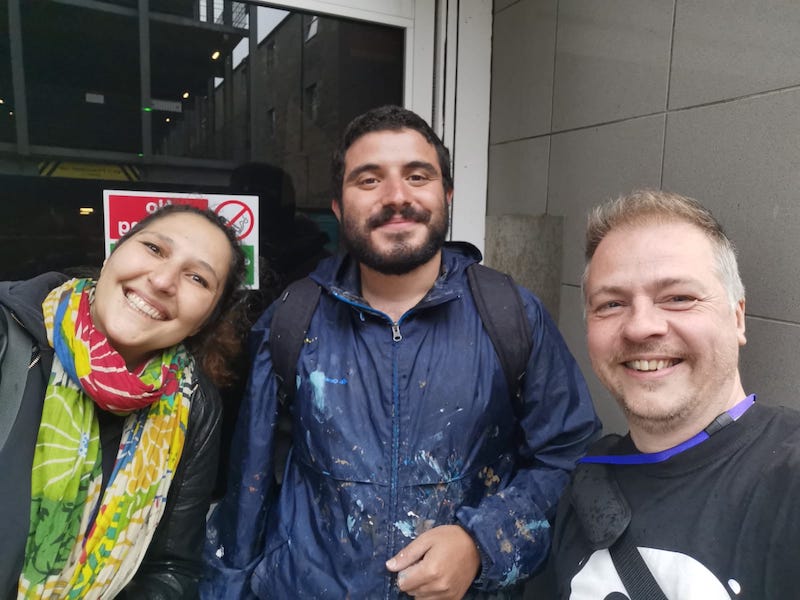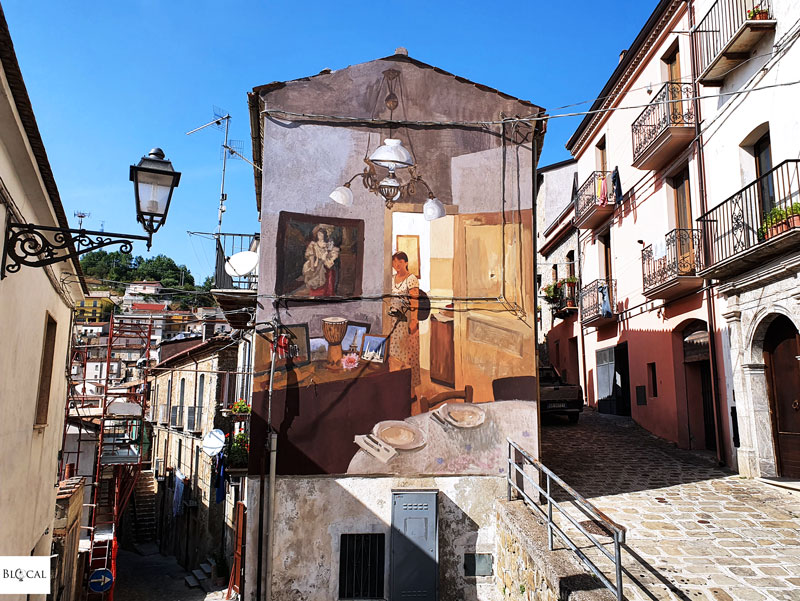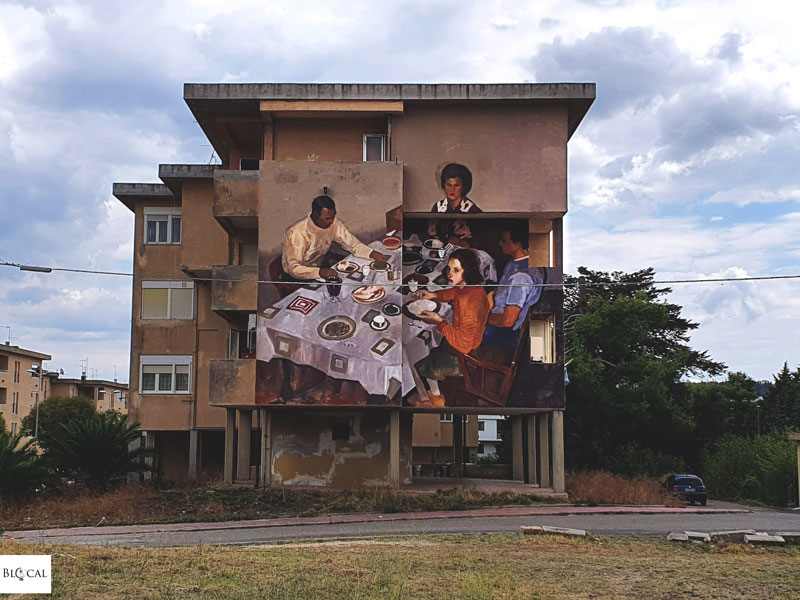After driving along the most impervious roads in southern Italy to admire the murals he painted in Basilicata last summer, I finally met Mohamed L’Ghacham at the Nuart Aberdeen Festival so I could witness his artistic process and ask him some questions.
Mohamed L’Ghacham and the evolution of his style
Born in Tanger, Morocco, Mohamed moved to Barcelona when he was only a year old. Living with his extended family, he began drawing to emulate his older cousin, who was a comic illustrator and has been constantly sketching ever since.
At 14 years old, Mohamed met two schoolmates who were into graffiti and began drawing characters in between his friends’ letters.
Eventually, around 2015, Mohamed replaced his spray can with brushes and acrylics on the suggestion of his art school teacher, and the change in medium naturally brought about a change in his style.
After switching from cartoonish characters to realistic images, Mohamed was urged to study the works of classical masters like Velazquez, Goya, Rembrandt, and Caravaggio. He began developing this new style inside abandoned factories, which have always been the scene of artistic experimentation, a painterly style that he now brings all around Europe.
“The first festival that invited me was “In Wall We Trust,” in Airola, Italy. After I painted that first wall, many other festivals realized there was this different language. This is not street art, this is not stencil, this is not pop art, and there aren’t brilliant colors.”
Mohamed L’Ghacham
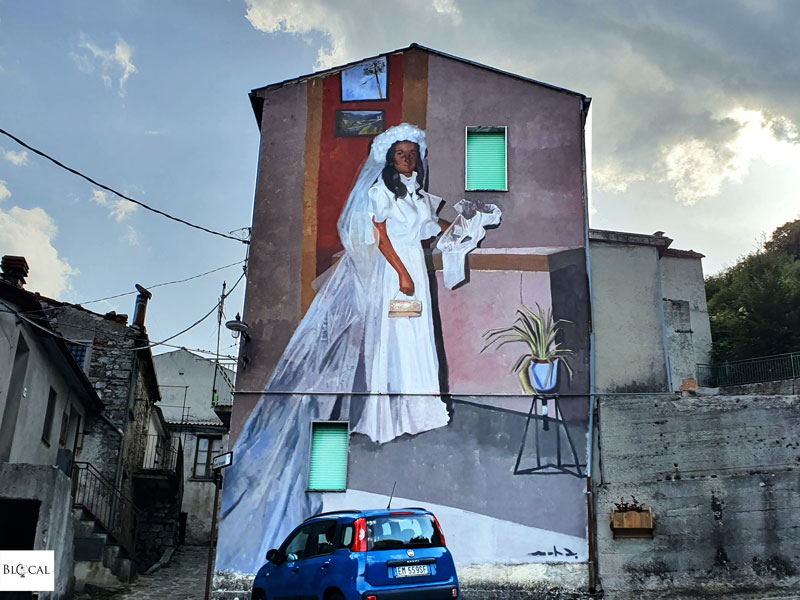
Mohamed L’Ghacham’s style and the Spanish wave in contemporary muralism
Mohamed L’Ghacham and his fellow contemporary mural artists from Spain boast of a painterly style that, right now, is highly sought after at street art festivals, although their artistic merit goes beyond the skillful realization of a photorealistic mural.
Like Mohamed, many contemporary mural artists from Spain use brushes instead of spray cans and hold classical masters in high regard while, at the same time, keep an eye out for the work of Spanish street artists like Gonzalo Borondo, Axel Void, Sebas Velasco, and Manolo Mesa. For Mohamed, the biggest influence came from the work of Spanish street artist Aryz.
“Aryz had a great influence on my work. His work is not classical, he doesn’t paint photorealistic murals, but his process is very classical. Even the way he radically changed his style after injuring his finger; he changed the style, but the process stayed the same. This is what I mean with “classical”: the process is as important as the final artwork. For me, Aryz is one of the biggest artists in Spain, and I learned a lot from him: our processes are very similar, very classical, but my style is completely different.”
Mohamed L’Ghacham
Mohamed has recently started to open himself to Moroccan influences, too. It all began with a passion for Arabic iconography, which he likes to spot on Barcelona’s buildings. He is always on the lookout for influences and style overlays in mosaics and geometric patterns.
“My friends in Morocco send me photos of their family, family portraits with their kids. I think in the future I will use more of those photos to show Arabic culture on walls worldwide.”
Mohamed L’Ghacham
The importance of the process in Mohamed L’Ghacham’s murals
After witnessing Mohamed L’Ghacham’s process at the Nuart Aberdeen Festival, I noticed that after adding a first layer of flat colors, he re-draws the whole scene, changing the outline he previously did on the wall. This way, the final image looks quite different from the initial sketch, which was already an evolution of the original photo that inspired the composition of the mural.
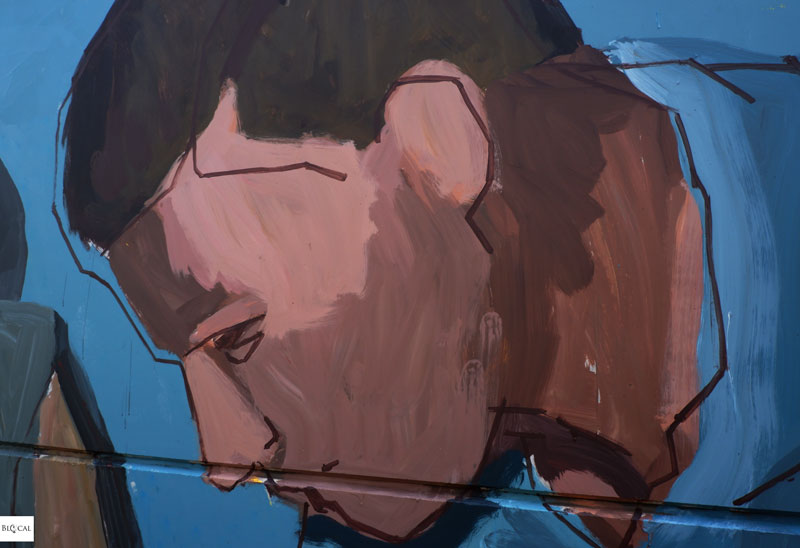
Mohamed often changes the images as he goes – the arm in a different position, a twist in the protagonist’s expression… – because his focus is on the process, not in faithfully reproducing the photo onto a larger format.
“The photo is just a tool, like the brush or the pole. I’m a huge photo collector. I buy bundles of old photos at Els Encants – Barcelona’s flea market – and only a few of them will eventually turn into a mural, but I love the process. Walking through the flea market, talking with vendors, bargaining the price, and browsing through hundreds of photos of strangers is already part of my artistic process. My process begins way before I apply the first layer of paint onto the wall.”
Mohamed L’Ghacham
The second step of Mohamed’s artistic process is picking the right photo for a wall. The main subject of his work is family portraits, so Mohamed is always on the hunt for group photos representing the universal feeling of familyhood.
“Any family can feel portrayed in my murals. They can remember those same family moments, and draw their own conclusions. I’m not a portrait artist, I prefer to paint the atmosphere, the colors, the sensations, the little moments of daily life. A family portrait is universal: everybody, no matter where they come from, understands it.”
Mohamed L’Ghacham
Next to their narrative power, another characteristic of Mohamed L’Ghacham’s murals is the desaturated color palette. To develop it, he looks for photos in analogical colors rather than black and white, and then he bleaches the colors until he finds a palette that perfectly blends with the surroundings.
“I think the desaturated colors are a legacy of Aryz. I’ve always loved how his murals, despite the large scale, aren’t imposing. That delicacy is down to Aryz’s color palette.”
Mohamed L’Ghacham
Mohamed L’Ghacham’s mural for Nuart Aberdeen Festival 2022
In Aberdeen, Mohamed L’Ghacham painted a family in the warmth and conviviality of their home. In El Desayuno (“The Breakfast”), the artist brings to the public space the simplicity of such a private, daily moment as breakfast.
“At a time when we pay more attention to our mobile phone than the person in front of us, I think it is important to paint a big homage to those few moments of everyday life where we are in communion. With this mural, I wanted to supersize a small thing in life; breakfast with your family. Mundane moments like that make life worth living.”
Mohamed L’Ghacham
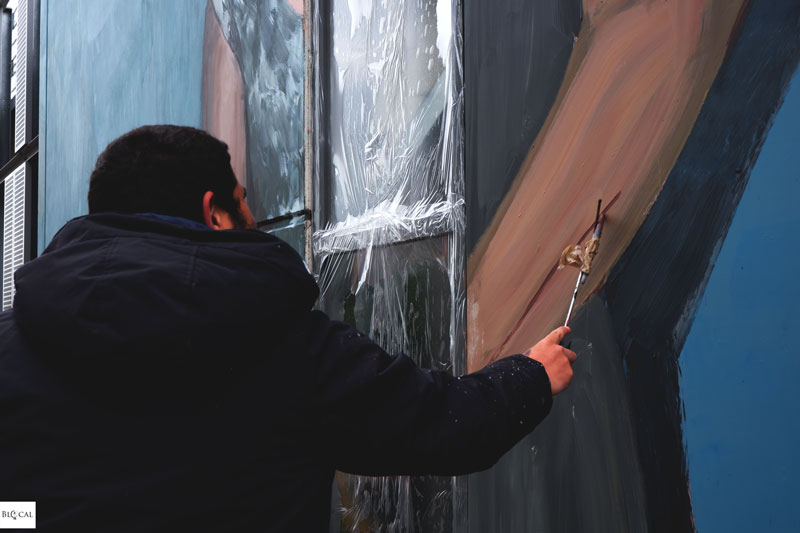
Mohamed’s work keeps evolving around candid moments of sharing between family members, a specific focus that has much to do with his roots.
“My family is from Morocco, and family is very important in Arabic countries. In Europe, especially in Northern Europe, there is a disconnection, there is more individualism. When I go to Morocco, I see more communion and more dialogue between family members. For example, nursing homes are unimaginable in Morocco. Elders live with their family and the family takes care of them. Likewise, they take care jointly for the children of the family. There’s a collective effort, families are larger, and all members live under the same roof.”
Mohamed L’Ghacham
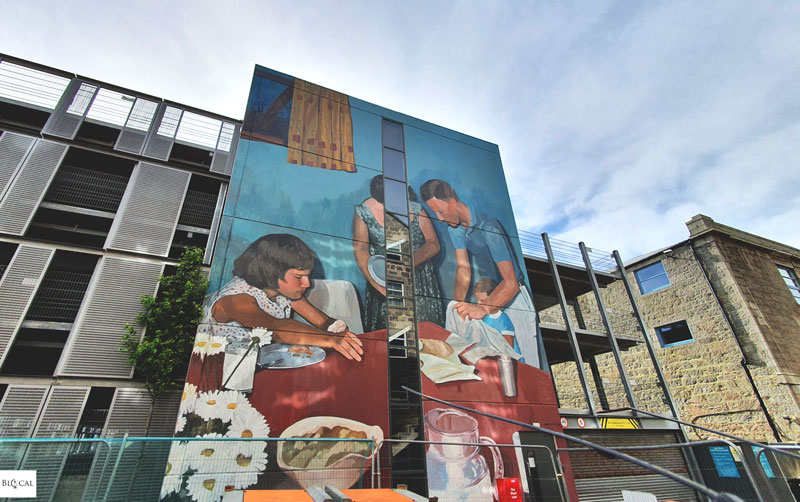
In Aberdeen, Mohamed’s artistic mission of supersizing small moments is further amplified by the choice of the wall: a large wall in a narrow street which guarantees the surprise effect for those walking along the main road. Moreover, Mohamed took into consideration the area of the mural, proving that (thankfully!) there is still someone painting for actual people in the street rather than for views on Instagram.
“I like that the wall is in an industrial area, a neighborhood characterized by huge silos and big boats. I love the contrast with the intimate moment I painted. I also love that the building is a car park in a business district -something very impersonal which now boasts of an intimate moment. I like to imagine people in their office, looking at my mural outside the window and remembering what is truly important: the moment when they will go home and kiss their son.”
Mohamed L’Ghacham
